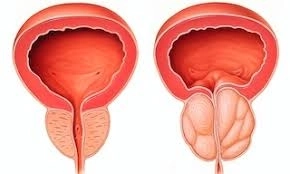
Laser Vaporization of the Prostate: A Safe and Effective Technique
Published on: 2025-06-29 | Written by: Dr. Mohamed Mohsen Consultant Urologist
Dr. Mohamed Mohsen, Consultant in Urology, Andrology, and Endoscopy Surgery, Fellow of MPUH-Nadiad (India), Member of the European Association of Urology (EAU), and Head of the Urology Department at the Police Hospital, sheds light on one of the most advanced techniques used in the treatment of benign prostatic hyperplasia (BPH): laser vaporization. This non-surgical procedure is known for its precision, safety, and rapid results.
What Is Benign Prostatic Hyperplasia (BPH)?
BPH is a non-cancerous enlargement of the prostate gland, commonly associated with aging. As the gland enlarges, it compresses the urethra, causing bothersome urinary symptoms such as:
-
Difficulty initiating urination
-
Weak urine stream
-
Frequent urination, especially at night
-
Feeling of incomplete bladder emptying
Dr. Mohamed Mohsen explains that laser vaporization has become a highly effective and safe alternative to traditional surgery for such cases.
What Is Laser Vaporization of the Prostate?
This technique uses a special laser (such as Holmium or GreenLight laser) to precisely vaporize and remove excess prostate tissue without the need for incisions.
Key Advantages, According to Dr. Mohamed Mohsen:
-
Highly safe: Minimizes bleeding, making it ideal for patients on blood thinners
-
Quick recovery: Most patients are discharged within 24 hours
-
Effective and long-lasting results: Significant symptom improvement within days
-
Fewer complications: Lower risk of incontinence or sexual dysfunction
-
High precision: Full control over tissue removal depth
Who Is a Candidate for Laser Vaporization?
Dr. Mohamed Mohsen notes it is particularly suitable for men who:
-
Suffer from severe BPH symptoms
-
Have not responded to medical therapy
-
Are not fit for conventional surgery due to heart disease or anticoagulant use
-
Prefer a minimally invasive and safe option
Pre-Procedure Evaluation:
Dr. Mohamed Mohsen performs a thorough assessment, which includes:
-
Urinalysis and urine culture
-
Uroflowmetry (urine flow test)
-
Prostate ultrasound imaging
-
Kidney function tests
-
PSA (Prostate-Specific Antigen) level testing
He provides patients with a clear explanation of the procedure and treatment plan.
Post-Procedure Follow-Up:
-
Catheter is usually removed within 24 hours
-
Patients can return to normal activities within a few days
-
Regular follow-up with Dr. Mohamed Mohsen to ensure symptom improvement and monitor progress

